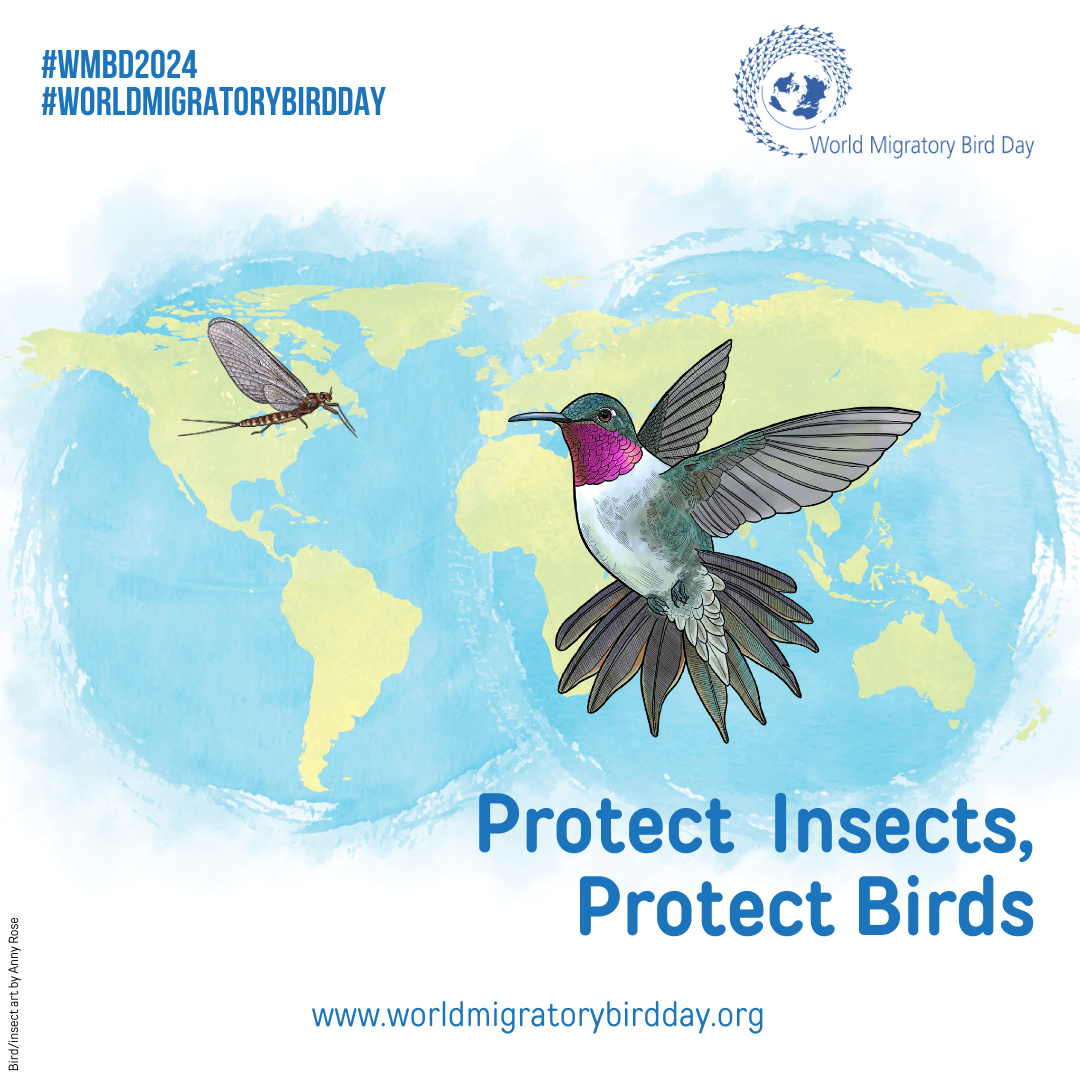World Migratory Bird Day
The Second Weekends of May and October are events observed twice each year as World Migratory Bird Day to focus world attention on the need to protect migratory bird populations, their habitats, and their international flyways.

Through exchanges of information from people within and between the world’s flyways, we can communicate and learn from each other, across borders, within and between the world’s three major flyways to increase the level of awareness about the threats that birds are facing.
This year’s theme “Protect Insects, Protect Birds” engages participants to understand the impacts of declining insect populations and the sustenance they provide so many migratory birds.

Migrating birds rely on insects for energy and a rich source of nutrients critical during migration and other stages of avian life cycles, especially when feeding their offspring. But massive decline in insect populations seriously impacts migratory birds. Lack of insect food influences timing, duration, and overall success of bird migrations. During stopovers along their migration routes, birds actively forage for insects in fields, forests, wetlands, and other habitats, flying insects in mid-air, or search for insects among leaves, bark, and vegetation. Many bird migrations coincide with peak insect abundance in their stopover areas.
Migrating birds connect us with their journeys. Their survival often depends on the role each of us plays in taking action to protect them. Each action we take to help them travel or feed safely, however small it might seem, adds up when we work together.
Birds add irreplaceable value to our natural environment and that is why the Roberta Bondar Foundation is working to raise awareness about the threats facing our precious birds, and to advocate for their more hopeful future. Here’s how the Space Station images help trace bird migrations in Dr Bondar’s Space for Birds | AMASS research project:
The Three Major Flyways
The Americas Flyway connects North American breeding grounds with wintering grounds in the Caribbean, Central, and South America.
The Africa-Eurasia Flyway connects European and northern Asian breeding grounds, including vital stop-over sites in the Middle East and Mediterranean, with wintering grounds in Africa.
The East Asian-Australasian Flyway connects north-east Asian breeding grounds, including vital stop-over sites in China and the Korean Peninsula, with wintering grounds in south-east Asia and Australia.
You up for World Migratory Bird Day Quizzes?
Right here!
Migratory birds fly distances that seem unbelievable to earth-bound human beings. For example, from its summering to its wintering grounds, the Bar-tailed Godwit flies 11,000 km over little more than 8 days without stopping.
For a cheeky Bar-tailed Godwit’s point-of-view — here’s an Australian ‘interview’ with a Bar-tailed Godwit about to make his return flight from Australia to Alaska…
Check out these RESOURCES!
then choose your filter to find a wealth of breathtaking posters, webinars, factsheets, educational materials, games, activities, infographics of species & habitats, flyers, presentations, social media resources.
B Bondar / Real World Content Advantage

